Papers by Jesus Alvarez Ruiz
Physical Review A, 2003
The fragmentation of the CD 4 molecule after selective ionization of the 1t 2 and 2a 1 electrons ... more The fragmentation of the CD 4 molecule after selective ionization of the 1t 2 and 2a 1 electrons with photons from 70 to 290 eV has been studied with the energy-resolved electron-ion coincidence technique. The mass spectra acquired in coincidence with 1t 2 electrons reveal CD 4 ϩ , CD 3 ϩ , and CD 2 ϩ fragments, depending on the excitation energy used. The production of CD 3 ϩ is strongly enhanced after C 1s excitation to different core excited states, with respect to the production observed after direct ionization of the 1t 2 orbital. This enhancement is correlated with the changes of the molecular geometry when it relaxes from the core-excited state.
Review of Scientific Instruments, 2015
The paper presents the calibration of Fuji BAS-TR image plate (IP) response to high energy carbon... more The paper presents the calibration of Fuji BAS-TR image plate (IP) response to high energy carbon ions of different charge states by employing an intense laser driven ion source, which allowed access to carbon energies up to 270 MeV. The calibration method consists of employing a Thomson Parabola Spectrometer to separate and spectrally resolve different ion species and a slotted CR-39 solid state detector overlayed onto an Image Plate for an absolute calibration of the IP signal. An empirical response function was obtained which can be reasonably extrapolated to higher ion energies. The experimental data also shows that the IP response is independent of ion charge states.
The Review of scientific instruments, 2014
A novel method for characterising the full spectrum of deuteron ions emitted by laser driven mult... more A novel method for characterising the full spectrum of deuteron ions emitted by laser driven multi-species ion sources is discussed. The procedure is based on using differential filtering over the detector of a Thompson parabola ion spectrometer, which enables discrimination of deuterium ions from heavier ion species with the same charge-to-mass ratio (such as C(6+), O(8+), etc.). Commonly used Fuji Image plates were used as detectors in the spectrometer, whose absolute response to deuterium ions over a wide range of energies was calibrated by using slotted CR-39 nuclear track detectors. A typical deuterium ion spectrum diagnosed in a recent experimental campaign is presented, which was produced from a thin deuterated plastic foil target irradiated by a high power laser.
The Journal of Physical Chemistry A, 2001
Rotational and vibrational state distributions have been measured for the OH/OD(A 2 Σ +) fragment... more Rotational and vibrational state distributions have been measured for the OH/OD(A 2 Σ +) fragment produced by the photodissociation of H 2 O/D 2 O at a set of wavelengths in the 133-119 nm range that lead to excitation of the B (1 A 1) state, either directly or through particular absorption features of the C
Review of Scientific Instruments, 2004
ABSTRACT The details of an experimental setup for gas phase atomic and molecular fluorescence mea... more ABSTRACT The details of an experimental setup for gas phase atomic and molecular fluorescence measurements using synchrotron radiation are described in this article. The most significant part of the apparatus is an optical arrangement, which allows for simultaneous measurements of dispersed as well as total fluorescence intensity using an effusive gas jet and an inbuilt gas cell assembled in a convenient plug and measure configuration. The first measurements concerning fluorescence of the N2 molecule around the N 1s edge obtained with this setup are presented.
The Journal of Chemical Physics, 2000
A complete determination of the rotational and vibrational distributions in the OH/OD(A 2 ⌺ ϩ) fr... more A complete determination of the rotational and vibrational distributions in the OH/OD(A 2 ⌺ ϩ) fragments which result from the VUV photodissociation of H 2 O/D 2 O as a function of excitation energy is presented. VUV excitation was performed at eight different wavelengths ͑eleven for D 2 O͒ in the range between 132 and 124 nm. The vibrational branching ratios show a relatively fast rise of the vibrational excitation at threshold followed by a plateau. The general trend of the experimental results is well reproduced by a phase space theory calculation and by ab initio calculations reported by van Hemert and van Harrevelt. Rotational distributions seem to depend only on the available excess energy and, for a given excess energy appear to be similar for all vibrational levels in OH and OD.
Review and Letters, 9, 117 (2002) "Non Franck-Condon effects in the photoionization of N 2 to the... more Review and Letters, 9, 117 (2002) "Non Franck-Condon effects in the photoionization of N 2 to the N 2 + A 2 Π u state and of O 2 to the O 2 + X 2 Π g state in the 19-34 eV photon energy region"
Physics Procedia, 2014
The basics of laser driven neutron sources, properties and possible applications are discussed. W... more The basics of laser driven neutron sources, properties and possible applications are discussed. We describe the laser driven nuclear processes which trigger neutron generation, namely, nuclear reactions induced by laser driven ion beam (ion n), thermonuclear fusion by implosion and photo-induced nuclear (gamma n) reactions. Based on their main properties, i.e. point source (< 100μm) and short durations (< ns), different applications are described, such as radiography, time-resolved spectroscopy and pump-probe experiments. Prospects on the development of laser technology suggest that, as higher intensities and higher repetition rate lasers become available (for example, using DPSSL technology), laser driven methodologies may provide neutron fluxes comparable to that achieved by accelerator driven neutron sources in the near future.
In the laser fusion reactor design, the protection of first wall and the final optics from high e... more In the laser fusion reactor design, the protection of first wall and the final optics from high energy ions is the key issue. So, it is necessary to predict the precise energy spectra of ions.In the previous reactor designs, the ion energy spectra were provided by the classical ion transport codes. However, this poster shows that the α particle spectrum is significantly modified by the anomalous process in ablated plasmas.
The Review of Laser Engineering, 2013
Significant efforts are being conducted in various areas of high-energy-density (HED) science in ... more Significant efforts are being conducted in various areas of high-energy-density (HED) science in Europe. In this frame, we will below review some recent results obtained in specific topics. In particular, we will outline recent experimental and theoretical results obtained in various fields as atomic physics, warm dense matter (matter with density above or equal solid, and temperatures above or equal to 1 eV), laserplasma interactions, the production of compact particle sources, magnetized plasmas, with relevance to varied applications like inertial confinement fusion (ICF), geophysics or astrophysics.
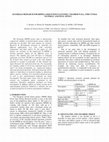
Fusion Science and Technology, 2011
The European HiPER project aims to demonstrate commercial viability of inertial fusion energy wit... more The European HiPER project aims to demonstrate commercial viability of inertial fusion energy within the following two decades. This goal requires an extensive Research & Development program on materials for different applications (e.g., first wall, structural components and final optics). In this paper we will discuss our activities in the framework of HiPER to develop materials studies for the different areas of interest. The chamber first wall will have to withstand explosions of at least 100 MJ at a repetition rate of 5-10 Hz. If direct drive targets are used, a dry wall chamber operated in vacuum is preferable. In this situation the major threat for the wall stems from ions. For reasonably low chamber radius (5-10 m) new materials based on W and C are being investigated, e.g., engineered surfaces and nanostructured materials. Structural materials will be subject to high fluxes of neutrons leading to deleterious effects, such as, swelling. Low activation advanced steels as well as new nanostructured materials are being investigated. The final optics lenses will not survive the extreme ion irradiation pulses originated in the explosions. Therefore, mitigation strategies are being investigated. In addition, efforts are being carried out in understanding optimized conditions to minimize the loss of optical properties by neutron and gamma irradiation.
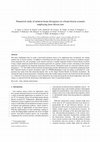
Nuclear Instruments and Methods in Physics Research Section A: Accelerators, Spectrometers, Detectors and Associated Equipment, 2016
The most established route to create a laser-based neutron source is by employing laser accelerat... more The most established route to create a laser-based neutron source is by employing laser accelerated, low atomic number ions in fusion reactions. In addition to benefiting from the high reaction cross-sections at moderate energies of the projectile ions, the anisotropy in the neutron emission is another important feature of beam-fusion reactions. Using a simple numerical model based on neutron generation in a pitcher-catcher scenario, anisotropy in the neutron emission was studied for the deuterium-deuterium fusion reaction. Simulation results are consistent with the narrowdivergence (∼ 70 • full width at half maximum) neutron beam recently obtained from an experiment employing multi-MeV deuteron beams of narrow divergence (upto 30 • FWHM depending on the ion energy) accelerated by a subpetawatt laser pulse from thin deuterated plastic foils via the Target Normal Sheath Acceleration mechanism. By varying the input ion beam parameters, simulations show that a further improvement in the neutron beam directionality (i.e. reduction in the beam divergence) can be obtained by increasing the projectile ion beam temperature and cutoff energy, as expected from the interactions with higher power lasers at upcoming facilities.
New Journal of Physics, 2016
The new Spanish installation for fusion research (Technofusion) has been approved by both the nat... more The new Spanish installation for fusion research (Technofusion) has been approved by both the national and regional governments. Funding up to 80-100 M€ will be invested in the construction of seven laboratories to cover many aspects relevant to fusion technology development. This work discusses their utility for inertial fusion research.
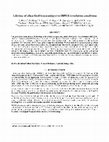
SPIE Proceedings, 2011
The goal of the European laser fusion project, is to build an engineering facility for repetitive... more The goal of the European laser fusion project, is to build an engineering facility for repetitive laser operation (HiPER 4a) and later a fusion reactor (HiPER 4b). A key aspect for laser fusion energy is the final optics. At the moment, it is based on silica transmission lenses located 8 m away from the chamber center. Lens lifetime depends on the irradiation conditions. We have used a 48 MJ shock ignition target for calculations. We have studied the thermo-mechanical effects of ions and X-rays on the lenses. Ions lead to lens melting and must therefore be mitigated. On the other hand, X-rays (~1% of the energy) does not produce either a significant temperature rise or detrimental stresses. Finally, we calculated the neutron flux and gamma dose rate on the lenses. Next, based on a simple model we studied the formation of color centers in the sample, which lead to optical absorption. Calculations show that simultaneous neutron and gamma irradiation does not significantly increase the optical absorption during the expected lifetime of the HiPER 4a facility. Under severe conditions (HiPER 4b), operation above 800 K or lens refreshing by thermal annealing treatments seem to assure adequate behavior.
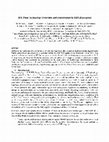
Diode-Pumped High Energy and High Power Lasers; ELI: Ultrarelativistic Laser-Matter Interactions and Petawatt Photonics; and HiPER: the European Pathway to Laser Energy, 2011
HiPER is the European Project for Laser Fusion that has been able to join 26 institutions and sig... more HiPER is the European Project for Laser Fusion that has been able to join 26 institutions and signed under formal government agreement by 6 countries inside the ESFRI Program of the European Union (EU). The project is already extended by EU for two years more (until 2013) after its first preparatory phase from 2008. A large work has been developed in different areas to arrive to a design of repetitive operation of Laser Fusion Reactor, and decisions are envisioned in the next phase of Technology Development or Risk Reduction for Engineering or Power Plant facilities (or both). Chamber design has been very much completed for Engineering phase and starting of preliminary options for Reactor Power Plant have been established and review here.
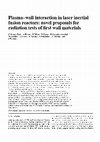
Plasma Physics and Controlled Fusion, 2012
Dry-wall laser inertial fusion (LIF) chambers will have to withstand strong bursts of fast charge... more Dry-wall laser inertial fusion (LIF) chambers will have to withstand strong bursts of fast charged particles which will deposit tens of U irr 2 and implant more than 10 18 particles irr 2 in a few microseconds at a repetition rate of some Hz. Large chamber dimensions and resistant plasma-facing materials must be combined to guarantee the chamber performance as long as possible under the expected threats: heating, fatigue, cracking, formation of defects, retention of light species, swelling and erosion. Current and novel radiation resistant materials for the first wall need to be validated under realistic conditions. However, at present there is a lack of facilities which can reproduce such ion environments. This contribution proposes the use of ultra-intense lasers and high-intense pulsed ion beams (HIPIB) to recreate the plasma conditions in LIF reactors. By target normal sheath acceleration, ultra-intense lasers can generate very short and energetic ion pulses with a spectral distribution similar to that of the inertial fusion ion bursts, suitable to validate fusion materials and to investigate the barely known propagation of those bursts through background plasmas/gases present in the reactor chamber. HIPIB technologies, initially developed for inertial fusion driver systems, provide huge intensity pulses which meet the irradiation conditions expected in the first wall of LIF chambers and thus can be used for the validation of materials too.
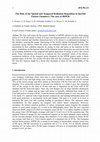
Nuclear Fusion, 2011
The first wall armor for the reactor chamber of HiPER will have to face short energy pulses of 5 ... more The first wall armor for the reactor chamber of HiPER will have to face short energy pulses of 5 to 20 MJ mostly in form of X-rays and charged particles at a repetition rate of 5-10 Hz. Armor material and chamber dimensions have to be chosen to avoid/minimize damage on the chamber, assuring the proper functioning of the facility during its planned lifetime. The maximum energy fluence which the armor can withstand without risk of failure will come determined by how radiation deposits its energy in time and space in the material. In this paper, simulations on the thermal effect of the radiation-armor interaction are carried out with an increasing definition of the temporal and spatial deposition of energy to prove this critical point. These calculations will lead us to present the first simulated values of the thermomechanical behavior of the tungsten armor designed for the HiPER project under a shock ignition target of 48 MJ. The results will show that only the crossing of the plasticity limit in the first few microns might be a threat after thousand of shots for the survivability of the armor.
Fusion Engineering and Design, 2011
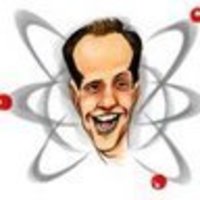
Uploads
Papers by Jesus Alvarez Ruiz